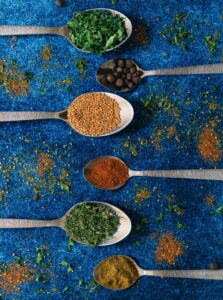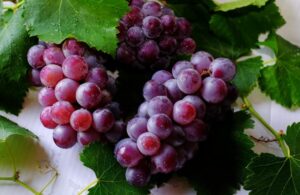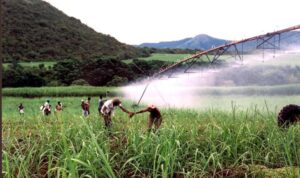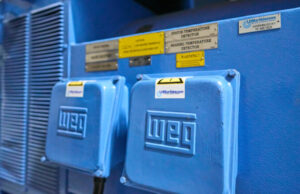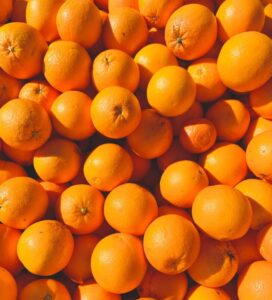Introduction
Invasive alien species (IAS) are species that have been introduced into an area and are able to out-compete and displace indigenous or useful alien species.
They may be plants, animals or microbes, including diseases, and are widely regarded as among the biggest threats to the productive use of land and water, the ecological functioning of natural systems, the populations’ health and the economy. By way of example, the water lost to invasive alien plants could sustain 120 000 hectares of crops to increase food production, or supply 3.38 million households of four members for one year.
The impact of these invasive species on the country’s economy is estimated in the hundreds of billions of rands, and the impact is rapidly increasing.
Source: www.sanews.gov.za/south-africa/sa-tightens-alien-species-regulation and Helen Gordon, WWF SA Water Balance Programme manager.
Legislation
South Africa has numerous Acts, administrated by different government departments, which deal with different aspects of invasive alien species. The ones most relevant to farmers are the Acts of the Department of Agriculture, dealing mainly with weeds and plant invaders, crop pests and diseases of livestock.
CARA (Conservation of Agricultural Resources Act 1983) (Act No. 43 of 1983)
CARA has certain regulations that provide for the control of weeds and invader plants. This act is currently under review regarding regulations 15 and 16 that are in the process of changing. The current CARA will thus be discussed. In terms of these regulations 15, there are 3 categories of regulated plants:
- Category 1 – Declared Weeds. These are plants that must be controlled on land or water surfaces by all land users. These plants may no longer be planted or propagated and all trade in seeds, cuttings or other propagation material is prohibited. They may not be translocated or be allowed to disperse. These species carry a fine. Category 1 plants include Lantana, Pom pom weed, Water hyacinth, Yellow oleander etc. Most of the aggressive species fall in this category. Category 2 species without a permit are treated as category 1 species.
- Category 2 – Declared Invaders (Invasive plants with commercial or amenity value). These are invader plants that pose a threat to the environment but nevertheless can be exploited for timber, fruits, fuel wood, medicinal plants, animal fodder, building material or shelter or to stabilise soil. These species are only allowed to occur in demarcated areas that carry a permit. If the plants are used for commercial purposes, land users have to obtain a water use licence as these plants consume large volumes of water. Where plants occur outside demarcated areas they have to be controlled. Category 2 plants include Black wattle, Sisal, Grey poplar and Weeping willow (not to be confused with indigenous willows). The landowner needs to approach the Department of Agriculture, Land Reform and Rural Development (DALRRD) to obtain a permit for the category 2 species; the decision to grant a permit is the responsibility of DALRRD.
- Category 3 – Declared Invaders (Invasive plants with ornamental value). These are plants that have the potential of becoming invasive but are considered to have ornamental value. In terms of Regulation 15 of CARA, these plants will not be allowed to occur anywhere except in biological control reserves unless they were already in existence when these regulations came into effect (30 March 2001). This means that the existing plants do not have to be removed by the land user; however, they must be kept under control and no new plant may be initiated, propagated or dispersed and the plants may no longer be sold. Category 3 plants include Jacaranda, Syringa, Australian silky oak, St Joseph’s lily etc.
Agricultural Pests Act, Act No. 36 of 1983
This Act provides for measures by which agricultural pests may be prevented from entering the country, and by which existing pests may be combated. It specifies, amongst other things, that any products or materials that might harbour agricultural pests, require an import permit before they can be imported into the country.
Animal Health Act 7 of 2002
This Act provides for measures to promote animal health and to control animal diseases;to assign executive authority with regard to certain provisions of this Act to provinces; to regulate the importation and exportation of animals and things; to establish animal health schemes; and to provide for matters connected therewith.
National Environmental Management: Biodiversity Act (NEM:BA), No. 10 of 2004
This is a more recent piece of legislation, administrated by the Department of Forestry, Fisheries and the Environment, which aims to protect the country’s biodiversity by, amongst others, controlling alien and invasive organisms. Chapter 5 of this act requires permits for carrying out restricted activities involving any alien species that has not been exempted, or any listed invasive species. The restricted activities include importation, having under one’s control, propagating, selling, buying and translocating a specimen of the specific species. Organisms that are indigenous to the country but occur outside their natural range are also defined as alien species for the purposes of this act.
In 2014 the then Department of Environmental Affairs published amended regulations on Alien and Invasive Species (AIS) in terms of the National Environmental Management: Biodiversity Act. The AIS Regulations are aimed at preventing the introduction of more species that may be potentially invasive. This includes monitoring the deliberate and accidental introduction of species through airports, harbours, land borders and mail.
Control measures for Invasive Alien Plants
One or a combination of the following control methods are used: mechanical (uprooting, felling, cutting, burning, brashing), chemical (treatment with registered herbicides), and biological control (find the “Biocontrol” chapter). Burning is also an option in certain environments and the Working on Fire programme can be contacted for assistance in this regard.
An integrated management plan is recommended for any area invaded by invasive alien plants, to determine the order in which different alien species and sub-sections of the invaded area will be addressed, and to ensure that the most efficient and cost-effective combination of control methods is selected. Regular follow-up operations are very important and necessary to achieve control when using mechanical or chemical measures. The control should be strictly according to the label on the herbicide and no off label applications should be considered as this is guided by the Fertilizers, Farm Feeds, Agricultural Remedies and Stock Remedies Act, 1947 (Act No. 36 of 1947).
The control of alien invasive plants can be very expensive in terms of manpower, material and equipment. If it is carried out incorrectly or if the wrong method is chosen, this expenditure could be in vain, and it could even result in huge environmental damage.
Before deciding on the most effective, affordable and appropriate control option for invading alien plants in a particular situation, several factors need to be borne in mind e.g. control methods should be used that are appropriate for the species as well as ecosystems in which they occur.
Biological control of invasive alien plants
Biocontrol is a long term sustainable solution to the invasive plant control programme. It often works best in an integrated management system where it augments the existing control programme and over the long term reduces the costs of the other control methods, making the control programme sustainable.
Biological control is the use of host-specific natural enemies such as insects and disease-causing micro-organisms or pathogens such as fungi to control or reduce the invasiveness of invasive alien plants. Biocontrol agents are mostly introduced from the country of origin of the plant. Before introducing agents, scientists first test these natural enemies extensively in the country of origin and in South Africa, under quarantine conditions, to ensure that they will not damage crops or other plants in South Africa or those of neighbouring countries. This process can take between 3 and 8 years. No cases have occurred of weed biocontrol agents changing their host plant affinities after their release in a new country to include plants other than those known to be acceptable hosts.
Biocontrol reduces the weed density to an acceptable level or reduces the vigour and/or reproductive potential of individual plants. The fact that a few host plants always survive, in spite of the attack by a biocontrol agent, actually ensures that the agent does not die out as a result of a lack of food. The small population of biocontrol agents that persists will disperse onto any regrowth or newly-emerged seedlings of the weed. For this reason, biocontrol can be regarded as a sustainable control method with minimal costs.
Biological control works relatively slowly. On average, at least five years should be allowed for a biocontrol agent to establish successfully before causing significant damage to its host plant. Unfortunately, not all growth of invasive plant species can be curbed purely by biological control.
Advantages of Biocontrol
- Biocontrol is environmentally friendly because it causes no pollution and affects only the target (invasive) plant;
- It is self-perpetuating or self-sustaining and therefore permanent;
- It is cost-effective;
- It does not disturb the soil or create large empty areas where other invaders could establish, because it does not kill all the target plants at once. Instead, it allows the natural vegetation of the area to recover gradually in the shelter of the dying weeds.
In cases where effective biological control is currently available against an invasive alien plant species, further time and money should not be wasted on other clearing methods. The chemicals and labour costs saved in this way can rather be used for the control of invasive alien plants where there are no effective biocontrol agents, or in areas where biological control is less effective.
If you would like to have biocontrol agents released against alien invasive plants on your property, please make arrangements with your Regional Working for Water Biological Control Implementation Officer. The Resource Auditors of the Department of Agriculture’s Directorate of Land Use and Soil Management are also contact persons from whom biocontrol agents can be obtained. Find their details under the “National strategy and government contact” heading.
If you have a more academic question about biocontrol agents, you could contact the Weeds Research Division, Plant Health and Protection, ARC. E-mail PriceR [at] arc.agric.za.
Find information at www.arc.agric.za.
Rehabilitation of areas from which Invasive Alien Plants have been cleared
Once invasive alien plants have been cleared from an area, it will certainly not be the end of the problem. Many plants have the ability to sprout or coppice from their roots or cut stumps unless the stumps are treated with suitable herbicides, resulting in a worse infestation than before. Large numbers of seeds of the invasive alien plants will still be in the soil, and these will germinate in huge numbers once more sunlight penetrates to the soil. The soil disturbance caused by the uprooting of trees also causes seeds of invasive species to germinate. Many alien legumes, such as the Australian Acacia species (wattles) have fire-resistant seeds that are stimulated by fires to germinate, while most other seeds of indigenous plants will be killed. Care must be taken in sensitive biomes such as the fynbos biome as the legume species have nitrogen fixing bacteria in their roots that cause an allelopathic effect and changes the soil composition thereby outcompeting the indigenous species.
To prevent cleared areas from being overrun by invasive species again, follow-up actions have to be maintained for as many years as it takes. It is also very important to establish a more desirable form of vegetation in the cleared areas, e.g. fast-growing grass species.
Publications/guidelines on rehabilitating areas cleared of invasive alien plants are obtainable from PHP, Book sales. Phone 012 808 8000. There is also information available from the Working for Water programme at www.dffe.gov.za/projectsprogrammes/wfw.
National strategy and government contact
Find the latest NEMBA Invasive Species lists, legislation and other information at https://invasives.org.za.
Partnerships have been formed with the private sector through the South African Nursery Association (SANA) and SAPTA (South African Pet Traders Association) to educate the industry about IASs. There is also collaboration with colleagues in other African countries on the biological and integrated control of several invasive alien plant species elsewhere in Africa.
Department of Forestry, Fisheries and the Environment (DFFE) Natural Resource Management (NRM) www.dffe.gov.za The fight against invasive alien plants (IAPs) is spearheaded by the Working for Water (WfW) programme, and is administered through this Department. Every year the programme employs around 30 000 people, mostly from poor communities. Find the “Working For/On Programmes / EPWP/NRM” pages under the “Projects and programmes” option on the website
Department of Agriculture, Land Reform and Rural Development (DALRRD) Directorate: Land Use and Soil Management (LUSM) www.dalrrd.gov.za
Other government departments involved include the Departments of Water and Sanitation; Trade, Industry and Competition; Science and Innovation; and provincial departments of government.
Role players
International business environment
- Increased global trade, transport and tourism, has expanded the movements of organisms from one part of the world to another through newly created pathways.
- In the past, many losses to biological invasion went unrecorded. Today, there is an increasing realisation of the ecological costs in terms of irretrievable loss of native biodiversity and degradation of ecosystem functioning.
- While the underlying causes of invasive species threats are significant and global in nature, these threats can be effectively dealt with through collaborative efforts at regional and local levels, especially through prevention, early detection and rapid response.
- A major challenge of our time is to understand the influence of climate change on the complex interactions and impacts of invasive species on natural and human-altered ecosystems.
Source: The International Union for Conservation of Nature (IUCN)'s Invasive Species Specialist Group (ISSG) at [now defunct] www.issg.org/about_is.htm
Some role players
- The International Union for Conservation of Nature (IUCN) www.iucn.org
- The IUCN’s Global Invasive Species Database provides global information on invasive alien species. Find it at www.iucngisd.org/gisd.
- CABI (formerly known as the Commonwealth Agricultural Bureaux) is a not-for-profit international organisation providing scientific expertise, knowledge and information. They have a long history researching invasive species that affect agriculture and the environment to find natural ways of controlling them. Visit www.cabi.org.
- Intergovernmental Science-Policy Platform on Biodiversity and Ecosystem Services (IPBES) www.ipbes.net
Websites and publications
Visit the websites listed earlier on this page e.g. https://invasives.org.za. They contain a host of information and resources.
Websites
- Find the web pages of ARC-PHP’s Weeds Research Programme on www.arc.agric.za.
- Find the Info Pak “Alien invaders” at www.dalrrd.gov.za.
- Find a write-up of the project “Exploring Working for Water success stories”, done by the Council for Scientific and Industrial Research (CSIR) at www.csir.co.za/exploring-working-water-success-stories.
Some publications
- Write to App4Agri at cropsolutions.za [at] mail.com for the following electronic guides: (i) Guide for the Control of Problem Plants South Africa (2022) (ii) Guide for the Control of Weeds in South Africa (2021) (iii) Weeds Common in Crops and the Herbicides that Control Them (2021) (iv) Chemical Control of Plant Diseases (2019), and (v) Crop Pest Management (2018).
- Publications from the ARC-PHP include: (i) Alien Weeds and Invasive Plants (ii) Invasive Aquatic Plants (iii) Rehabilitation Recommendations After Alien Plant Control (book) (iv) Rehabilitation Recommendations After Alien Plant Control (Grab-a-Grass-Dial). Write to booksales [at] arc.agric.za or infopri [at] arc.agric.za.
- Fact sheets on invasive alien plants and their biological agents by ARC-PHP can also be downloaded from www.arc.agric.za. The fact sheets are in printable PDF format.
- Search for the latest Southern African Plant Invaders Atlas (SAPIA) News put out by the ARC online.
- The SANBI journal, Bothalia African Biodiversity & Conservation, regularly features papers on IAS. Find the journal at www.scielo.org.za.
- Picker M. & Griffiths C. 2011. Alien and Invasive Animals. Cape Town: Struik Nature.
- Bromilow C. 2010. Problem plants and Alien weeds of South Africa. Pretoria: Briza.
- The Best practice reference manual for wool sheep farming in South Africa, available in English and Afrikaans, includes notes on dealing with invading alien plants management. Find the document on www.capewools.co.za or www.nwga.co.za.
- Henderson L. & Cilliers C.J. 2002. Invasive aquatic plants. Plant Protection Research Institute Handbook No. 16. ARC, Pretoria: 1-88.
- Henderson L. 2001. Alien Weeds and Invasive Plants. Plant Protection Research Institute Handbook No. 12. ARC, Pretoria: 1-300.
- Campbell P. 2000. Rehabilitation recommendations after alien plant control. Plant Protection Research Institute Handbook No 3. PPRI: 1-43.
- Find Common weeds of crops and gardens in southern Africa/ Algemene onkruide in gewasse en tuine in Suidelike Afrika on the Agricultural Research Council’s website, www.arc.agric.za.
- Control of Unwanted Plants. Xact Information: 1-238.
- Re-use of Invasive Alien Plants is an impressive booklet, commissioned by the Working for Water Programme.
On indigenous replacement plants
- Poona, N. 2008. Invasive Alien Plant Species in South Africa: Impacts and Management Options. Alternation 15(1): 160–179.
- Joffe P & Oberholzer T. 2020. Creative gardening with indigenous plants. A South African guide. Revised edition. Pretoria: Briza.
- Venter F. & Venter J.A. 1996. Making the most of indigenous trees. 2nd Edition. Pretoria: Briza.
Posters
- Find the Alien Tree Removal poster and poster notes at www.waterwise.co.za.
- Beautiful but dangerous. More invasive alien plants of Durban and the eastern, sub-tropical region of South Africa, with some indigenous alternatives. Colour photographs of 42 species, their legal status, and contacts for control. Find it at www.durban.gov.za. I
Posters are also available from the Working for Water Programme and organisations not listed on this page like the Botanical Society of SA.
Videos
Find videos like the one listed below on YouTube:
- SABC Digital. 2018, June 18. “Alien plant invasions trap a lot of water”. Available at www.youtube.com/watch?v=FFK4RX7J4jU
Some articles
- Odendaal N. 2025, March 18. “Weevil species released into the Crocodile river to combat invasive alien aquatic plant”. Engineering News. Available at www.engineeringnews.co.za/article/weevil-species-released-into-the-crocodile-river-to-combat-invasive-alien-aquatic-plant-2025-03-18
- Ntsonge S. 2025, February 24. “South Africa’s ‘working for water’ programme is meant to lead to skills and jobs: why it’s failing”. The Conversation. Available at https://theconversation.com/south-africas-working-for-water-programme-is-meant-to-lead-to-skills-and-jobs-why-its-failing-248694
- Nsikani MM. 2025, February 24. “South Africa’s famous fynbos must be preserved – but burning invasive plants on site isn’t the best strategy”. The Conversation. Available at https://theconversation.com/south-africas-famous-fynbos-must-be-preserved-but-burning-invasive-plants-on-site-isnt-the-best-strategy-247927
- Reporter. 2024, November 21. “Centre for Biological Control appointed to assist with invasive alien plants”. SA News. Available at www.sanews.gov.za/south-africa/centre-biological-control-appointed-assist-invasive-alien-plants
- Nsikani MM. 2024, June 3. “Nearly 25% of land in Africa has been damaged – what’s to blame, and what can be done”. The Conversation. Available at https://theconversation.com/nearly-25-of-land-in-africa-has-been-damaged-whats-to-blame-and-what-can-be-done-231315
- Coetzee J. 2024, April 9. “Tiny weevils are waging war on the invasive water lettuce plant choking South Africa’s Vaal River”. The Conversation. Available at https://theconversation.com/tiny-weevils-are-waging-war-on-the-invasive-water-lettuce-plant-choking-south-africas-vaal-river-226147
- Reporter. 2023, November 17. “Initiative seeks to combat alien species”. SA News. Available at www.sanews.gov.za/south-africa/initiative-seeks-combat-alien-species
- Coetzee J. 2023, September 21. “Invasive alien species are a serious threat to the planet: 4 key messages for Africa”. The Conversation. Available at https://theconversation.com/invasive-alien-species-are-a-serious-threat-to-the-planet-4-key-messages-for-africa-213778
- Peh S.H. 2023, September 5. “UN invasive species report reveals scale of threat to nature and people – and how to manage it”. The Conversation. Available at https://theconversation.com/un-invasive-species-report-reveals-scale-of-threat-to-nature-and-people-and-how-to-manage-it-212832
- Read the blog “Removing alien plants can save water: we measured how much” (May 2022).
- Napo T. nd. “Invasive alien plants in your garden: Plant indigenous plants instead”. Lonehill Media. Available at www.thegardener.co.za/the-gardener/plant-types/invasive-alien-plants-in-your-garden-plant-indigenous-plants-instead/
- Holden P., Rebelo A., Kimutai J. et al. 2022, March 14. “Clearing alien trees can help reduce climate change impact on Cape Town’s water supply”. The Conversation. Available at https://theconversation.com/clearing-alien-trees-can-help-reduce-climate-change-impact-on-cape-towns-water-supply-177463
- De Froberville P. 2019, October 31. “Is that an alien in my backyard? – Indigenous vs invasive species”. Go Legal. Available at www.golegal.co.za/invasive-alien-species-threat/
- Sishuba S. 2019, September 4. “Assistance for landowners to eradicate invasive alien plants”. Farmer’s Weekly. Available at www.farmersweekly.co.za/agri-news/south-africa/assistance-for-landowners-to-eradicate-invasive-alien-plants
- Grobler R. 2019, August 10. “Finally: A solution to get rid of the beetle that is killing SA’s trees”. News24. Available at www.news24.com/news24/southafrica/news/finally-a-solution-to-get-rid-of-the-beetle-that-is-killing-sas-trees-20190810
- Petterson D. 2019, April 1. “Alien plants threaten water security at two major dams”. Infrastructure News. Available at http://infrastructurenews.co.za/2019/04/01/alien-plants-threaten-water-security-at-two-major-dams/
- Arnoldi M. 2019, April 1. “CSIR warns of destructive impact of invasive plants on dam catchment inflows”. Engineering News. Available at www.engineeringnews.co.za/article/csir-warns-of-destructive-impact-of-invasive-plants-on-dam-catchment-inflows-2019-04-01
Our thanks to Hildegard Klein and Debbie Sharp for their extensive notes and contributions to this page.

